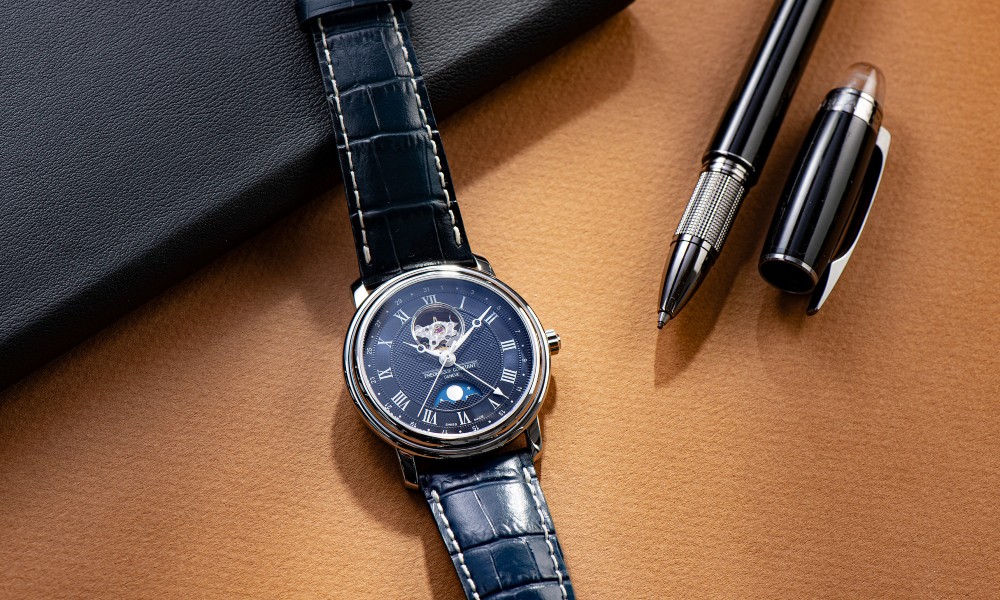Automatic watches, also known as self-winding watches, hold an irresistible charm for watch enthusiasts. They’re intricate, fascinating pieces of engineering that are a testament to human ingenuity. This comprehensive guide will delve into the world of automatic watches, exploring their history, how they work, and why they remain an enduring favorite.
History of Automatic Watches
The automatic watch traces its roots back to the 18th century with the invention of the self-winding pocket watch. Over the centuries, automatic watches have evolved, reflecting the advancements in timekeeping technology and design aesthetics. Today, they represent a perfect blend of craftsmanship and mechanical precision.
The Mechanics: How Automatic Watches Work
Automatic watches like quartz watch function on a simple principle: the natural movement of the wearer’s wrist winds the mainspring, an elastic metal element, which powers the watch. The movement of the wrist causes a rotor, a metal weight attached to a winding mechanism, to pivot. Thus, there are no batteries involved, and no winding is needed if worn regularly. Even in this digital age, automatic watches haven’t lost their allure. They offer a tactile pleasure, with each tick of the second hand representing a series of intricate movements within. Moreover, they serve as a link to a bygone era, a tribute to the artistry of watchmaking.
Choosing an Automatic Watch
When choosing an automatic watch, factors such as brand reputation, build quality, movement type, and aesthetic appeal should be considered. It’s a personal journey, with the final choice often reflecting the wearer’s personality and style. Despite their robust construction, automatic watches require regular maintenance to ensure optimum performance. This includes periodic cleaning, re-oiling, and professional servicing every 3 to 5 years.
How to Store Automatic Watches
Proper storage is crucial in maintaining the performance and longevity of automatic watches. When not in use, they should be kept in a cool, dry place away from direct sunlight. Consider investing in a watch box or case for protection against dust and accidental damage.
If you aren’t planning to wear your automatic watch regularly, consider purchasing a watch winder. This device mimics the movement of the wrist, keeping the mainspring wound and the watch running smoothly.
The Future of Automatic Watches
While contemporary smartwatches provide a slew of advanced features, the allure of automatic watches is unlikely to wane. They symbolize a link to our past, a celebration of human ingenuity and craftsmanship that no digital device can replicate. As innovations continue to transform the watchmaking industry, automatic watches are expected to evolve, combining traditional mechanics with modern aesthetics and features.
Appreciating the Watchmaking Artistry
When you hold an automatic watch, you’re holding a miniature universe of components working in harmony. The artistry involved in crafting these timepieces is astounding. Traditional watchmaking techniques passed down through generations are still in use today, reflecting the respect for craftsmanship in the industry. The intricate assembly of gears, springs, and wheels is a testament to human precision and creativity. Each part has a role, contributing to the symphony of movements that result in the seamless ticking of the watch.
Automatic Watches as Investments
While automatic watches serve a functional purpose, they can also be seen as an investment. High-quality automatic watches, especially from renowned brands, often appreciate in value over time. Their longevity, combined with their historical and artistic significance, contributes to this value. Like a timeless piece of art, a well-preserved automatic watch can fetch a hefty price in the collector’s market. However, it’s important to note that buying an automatic watch purely as an investment should be done with caution and proper research.
The Aesthetics of Automatic Watches
The aesthetic appeal of automatic watches is another compelling reason for their enduring popularity. Unlike digital watches, which rely on screens and electronic displays, automatic watches showcase classical beauty and elegance. From minimalist styles with clean lines and simple dials to elaborate designs featuring numerous complications, there’s an automatic watch to suit every aesthetic preference. Some watch lovers are drawn to vintage models, with their history and character, while others prefer modern timepieces with cutting-edge designs.
The Emotional Connection with Automatic Watches
Beyond their functionality and aesthetics, automatic watches often hold a deep emotional significance for their owners. These timepieces are frequently associated with memorable life events or personal milestones, making them more than just practical accessories. They can be a symbol of one’s journey, a gift marking a special occasion, or a cherished heirloom passed down through generations. Owning an automatic watch connects the wearer to a world of tradition, history, and craftsmanship, creating a sense of continuity and timelessness.
Conclusion
Automatic watches are more than just objects that tell time; they are symbolic of human innovation, artistry, and craftsmanship. Whether you’re a seasoned collector or a novice, the world of automatic watches offers something to captivate your interest.



